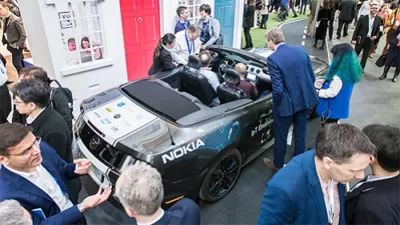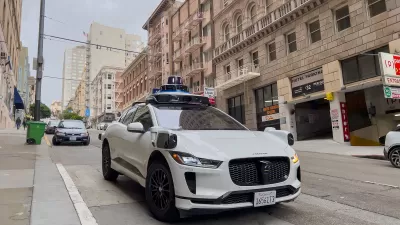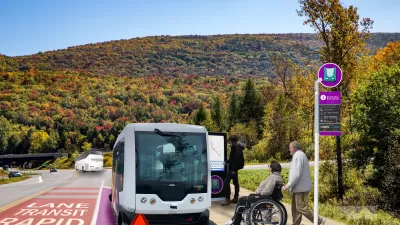Slashed budgets, executives heading for the exits, and delayed dreams—the autonomous vehicle industry is taking longer to get on the road than industry supporters expected.

“This is what happens when long-gestating new technology meets the short patience of public markets and harsh reality of rising interest rates,” writes David Welch for Bloomberg Hyperdrive.
The headline on the article is just as provocative, reading “Driverless Car Development Sets Ablaze a Bonfire of Billions.”
All in all, the promise of autonomous vehicles taking over the roads, relieving congestion, eliminating the need for parking, and ending traffic fatalities forever is still a pipe dream. And at such a cost. “Autonomous vehicle companies and suppliers have collectively spent around $75 billion developing self-driving technology, with scant sign of meaningful revenue emerging from robo-car services after all that cash incineration,” writes Welch.
A few examples of those ‘scant’ signs of self-driving progress can be identified in the news of recent weeks—like Waymo launching an autonomous taxi pilot in Los Angeles, a rural shuttle program in Minnesota, and an autonomous shuttle program to replace Jacksonville's aging monorail system.
In the meantime, however, autonomous vehicle companies are slashing budgets, pulling the plug, and saying goodbye to high ranking executives. “The lesson is that technology as radical as robotic driving was always better off in the incubators of daring venture capitalists, not the portfolios of trigger-happy stock traders,” writes Welch.
FULL STORY: Driverless Car Development Sets Ablaze a Bonfire of Billions

Alabama: Trump Terminates Settlements for Black Communities Harmed By Raw Sewage
Trump deemed the landmark civil rights agreement “illegal DEI and environmental justice policy.”

Planetizen Federal Action Tracker
A weekly monitor of how Trump’s orders and actions are impacting planners and planning in America.

The 120 Year Old Tiny Home Villages That Sheltered San Francisco’s Earthquake Refugees
More than a century ago, San Francisco mobilized to house thousands of residents displaced by the 1906 earthquake. Could their strategy offer a model for the present?

In Both Crashes and Crime, Public Transportation is Far Safer than Driving
Contrary to popular assumptions, public transportation has far lower crash and crime rates than automobile travel. For safer communities, improve and encourage transit travel.

Report: Zoning Reforms Should Complement Nashville’s Ambitious Transit Plan
Without reform, restrictive zoning codes will limit the impact of the city’s planned transit expansion and could exclude some of the residents who depend on transit the most.

Judge Orders Release of Frozen IRA, IIJA Funding
The decision is a victory for environmental groups who charged that freezing funds for critical infrastructure and disaster response programs caused “real and irreparable harm” to communities.
Urban Design for Planners 1: Software Tools
This six-course series explores essential urban design concepts using open source software and equips planners with the tools they need to participate fully in the urban design process.
Planning for Universal Design
Learn the tools for implementing Universal Design in planning regulations.
Clanton & Associates, Inc.
Jessamine County Fiscal Court
Institute for Housing and Urban Development Studies (IHS)
City of Grandview
Harvard GSD Executive Education
Toledo-Lucas County Plan Commissions
Salt Lake City
NYU Wagner Graduate School of Public Service





























